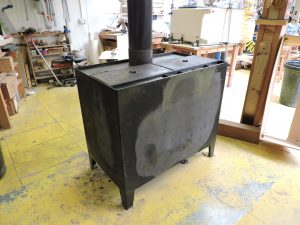Tom Fraser, deputy principal
Everyone who teaches at the Chippendale school, or who passes through our doors as students, have an innate passion for the raw materials of our trade: wood.
We respect the diversity of this most basic yet wonderful material, and it’s the reason why almost all the wood that we use is obtained sustainably from local Scottish sources, in accordance with the Forestry Stewardship Council.
We wish that this approach was respected universally. It’s estimated that some seven million hectares of forest are lost annually while agricultural land is expanding by about six million hectares. Only four billion hectares of forest remain worldwide.
While it’s impossible to reach an accurate figure, that adds up to between 3.5 billion to 7 billion trees being cut down each year, with relatively few being replaced. Deforestation is the world’s second largest source of greenhouse gas emissions.
By sourcing our wood from forests that are certified as well managed, we are ensuring that the trees that we use are replaced under strict replanting protocols. That means that those certified forests store more carbon and, by being replanted, replace a natural asset that is never depleted.
The majority of our timber is sourced from within Scotland, from sawmills and merchants who comply with the Association of Scottish Hardwood Sawmillers or Scottish Working Woods, and therefore have a chain of supply that can trace the wood back to responsibly managed woodlands.
Where we have to source wood from outside the UK, we do so from merchants who adhere to EU timber regulations, and so ensure that the woods we buy only come from sustainable forests.

But in any process of design and making, including fine furniture, there are always the off-cuts that end up as waste. However, at the Chippendale school, those scraps of wood are used in their entirety to heat the school during the winter months.
We always try to minimise waste and, wherever possible, to recycle waste materials. It is the responsible thing to do. Even some of our buildings are insulated using straw bales – using nature to provide insulation.
But responsible use of wood in fine furniture extends beyond timber merchants and furniture makers. It also extends to buyers of furniture because, ultimately, it is consumers who determine how the market operates.
For a major furniture producer, the manufacturing process involves the assembly of materials into furniture pieces and subsequent finishing, and it takes more energy to produce, for example, MDF than it does to fashion real wood.
The production of materials like MDF require wooden scraps to be broken down, dried, mixed with adhesives, and then heated and pressed into panels. All very energy intensive, and anything but environmentally friendly.
Then there are air-quality issues. Materials such as MDF can emit formaldehyde because of the adhesives used in their manufacture, and formaldehyde can cause health problems at levels above even 0.1 parts per million.
In other words, buying real wood furniture from a fine furniture maker is a far more environmentally friendly option than buying from a mass manufacturer. Of course, it’s not the cheapest option, but maybe it’s time that we all started thinking in new ways.

A piece of hand-crafted furniture is made to last several lifetimes. It isn’t there to be replaced every time the living room walls are repainted.
Fine furniture is made to be an heirloom, passing down the generations, and giving pleasure for many years. In other words, although the initial cost may be higher, there can be significant long-term savings.
It’s a message that is finding resonance among consumers. The market for fine furniture is growing, primarily in Europe, but with Asian countries such as India not far behind. The message does therefore seem to be getting through, and primarily to younger people, the new generation for whom the environment is of enormous importance.
Long term, buying fine furniture can save you money. But the biggest saving is to the environment, and that’s priceless.
